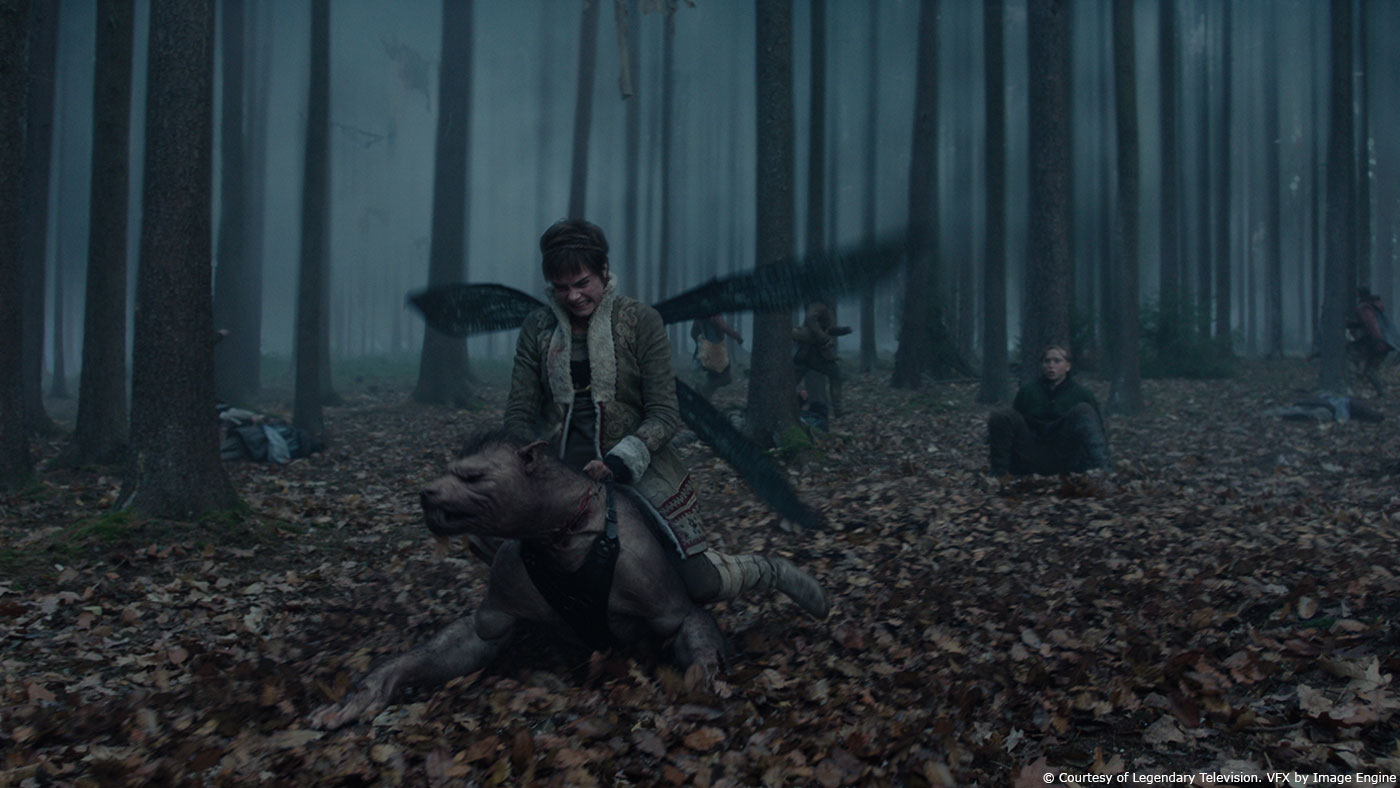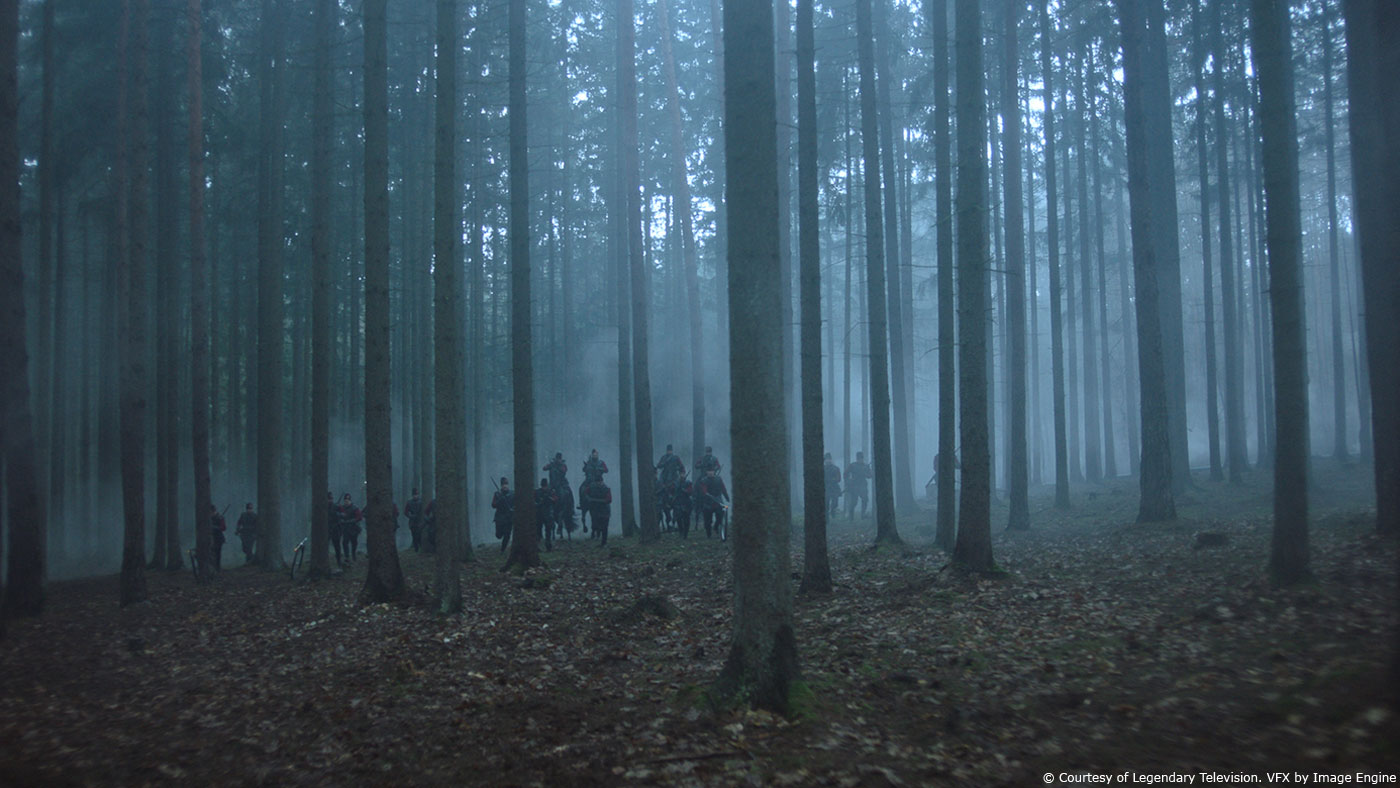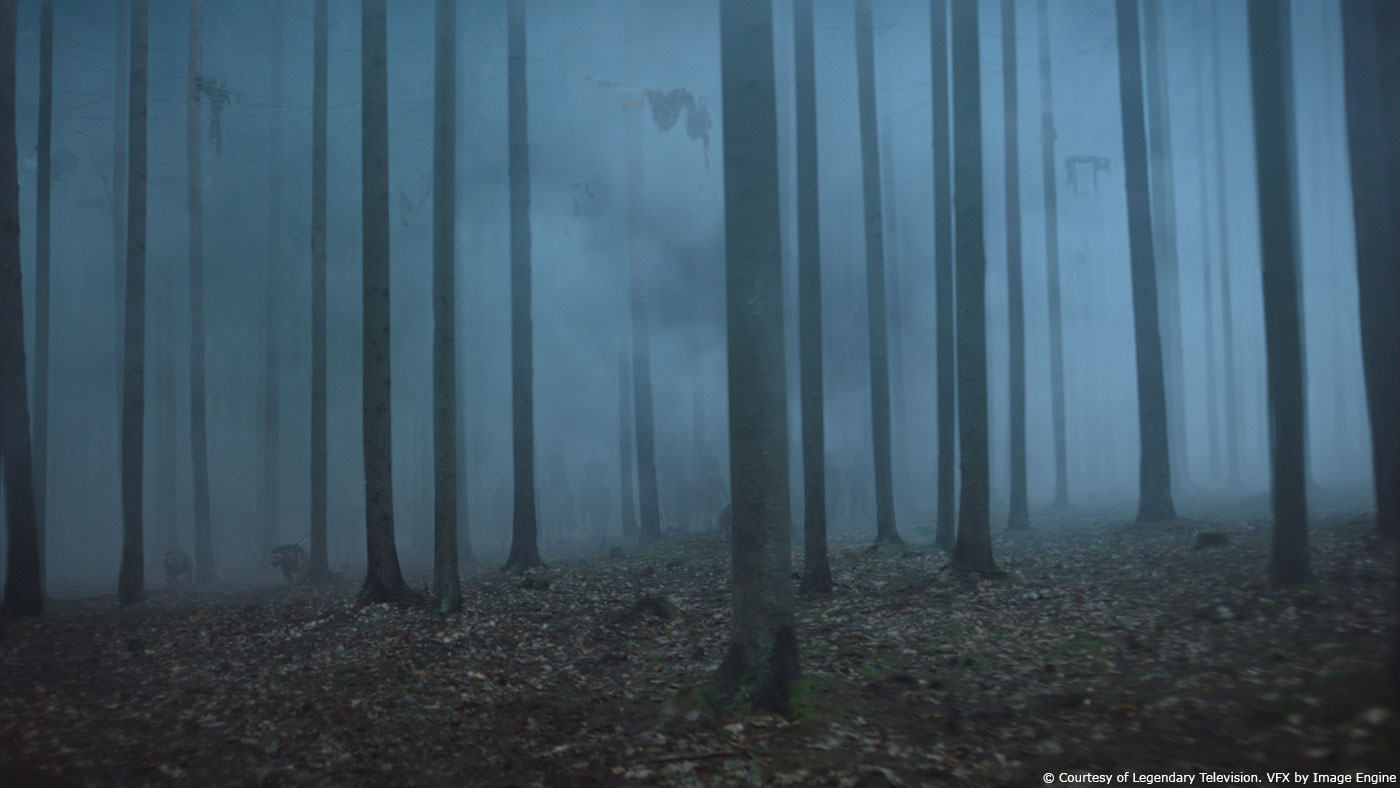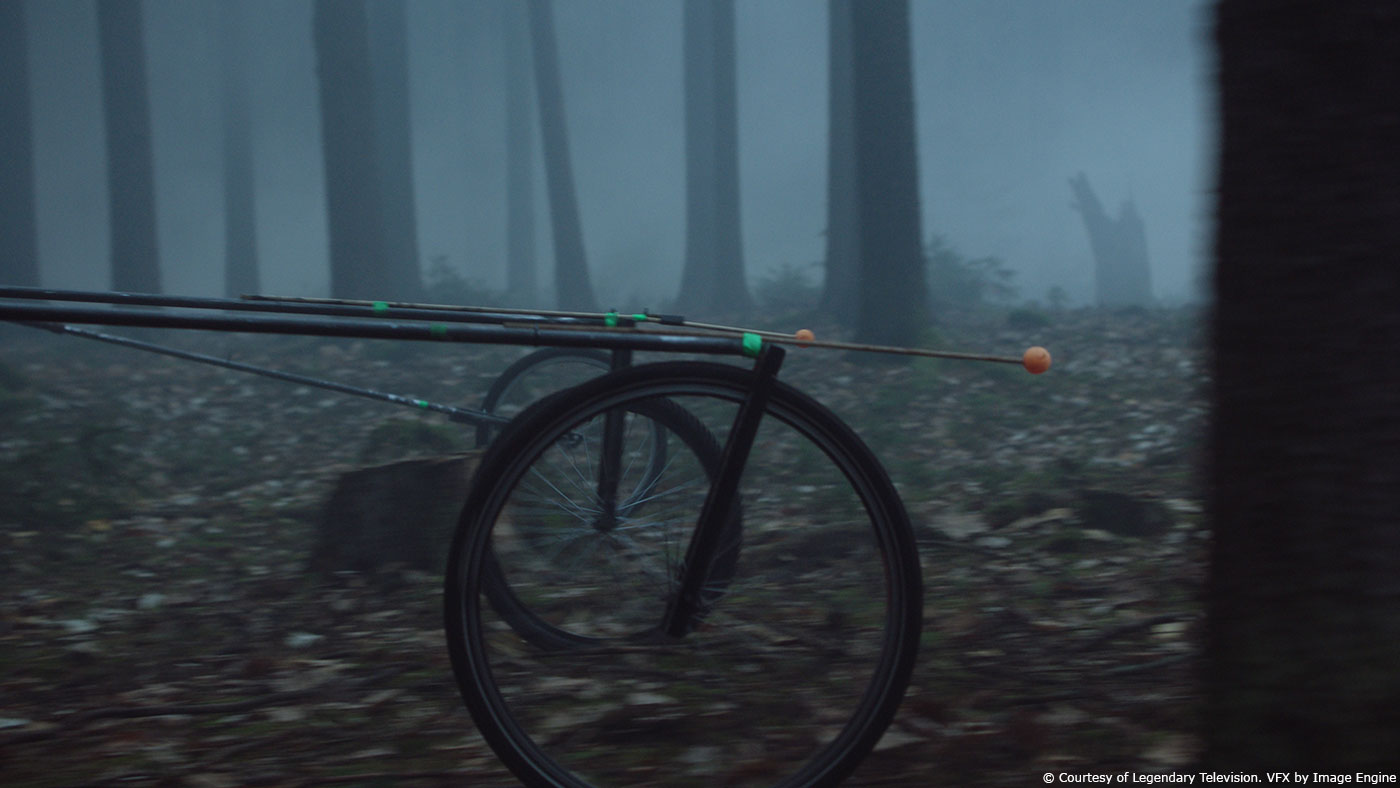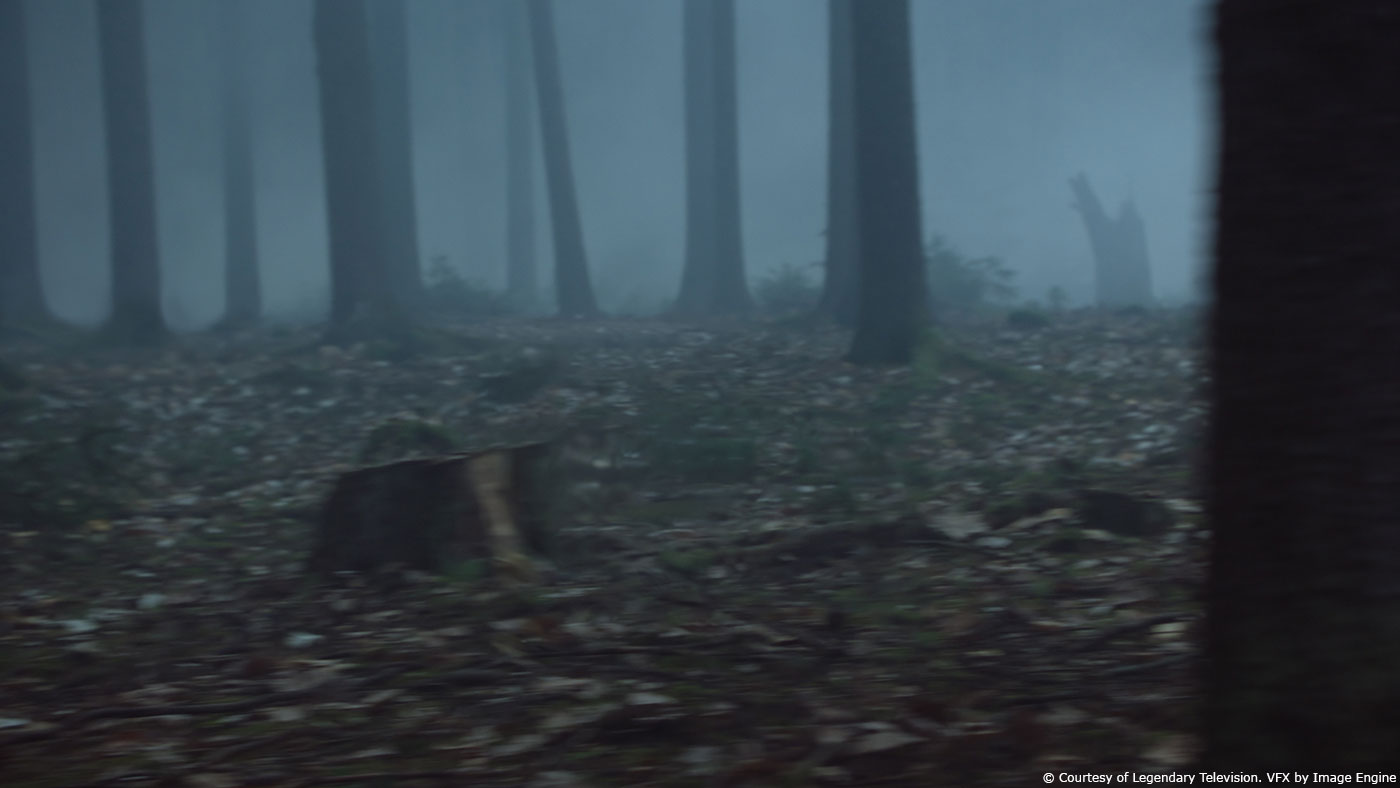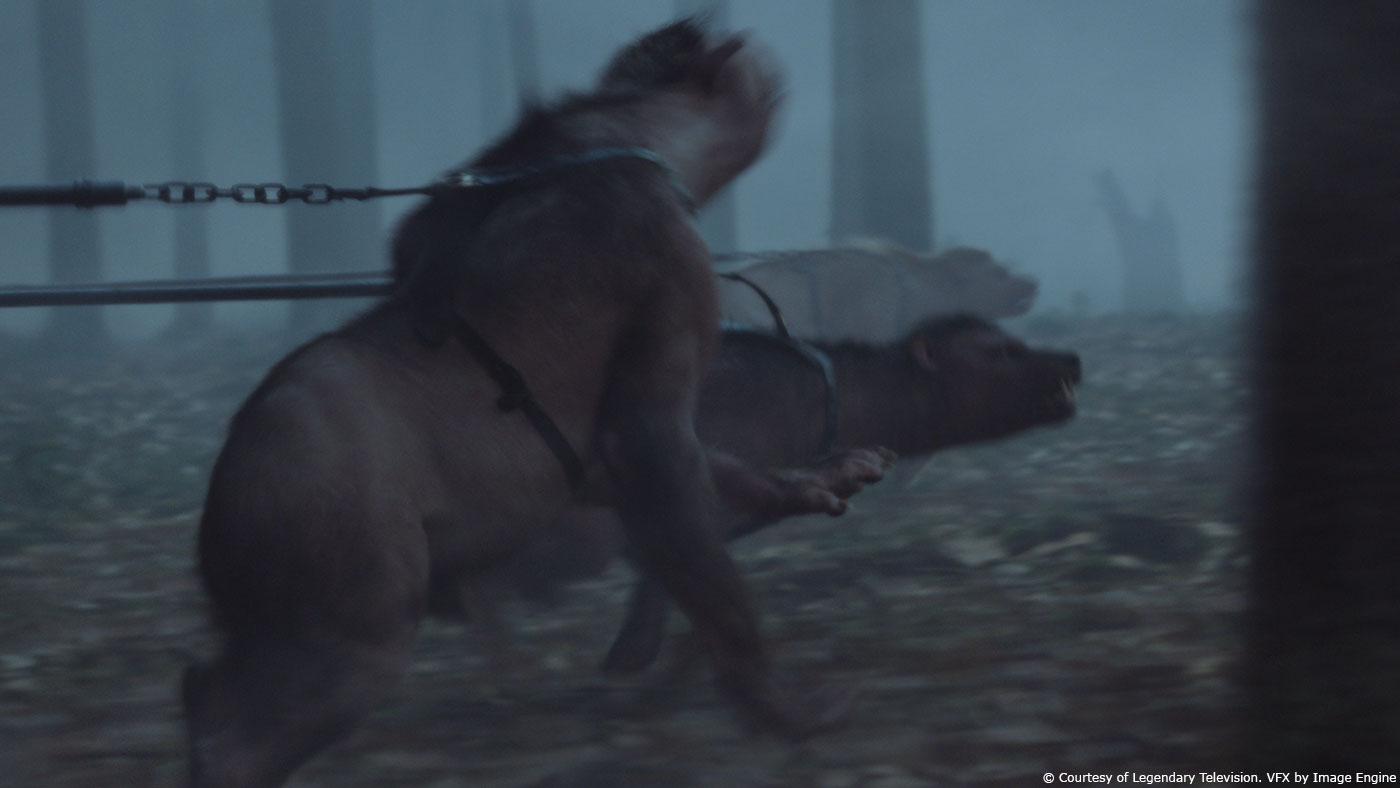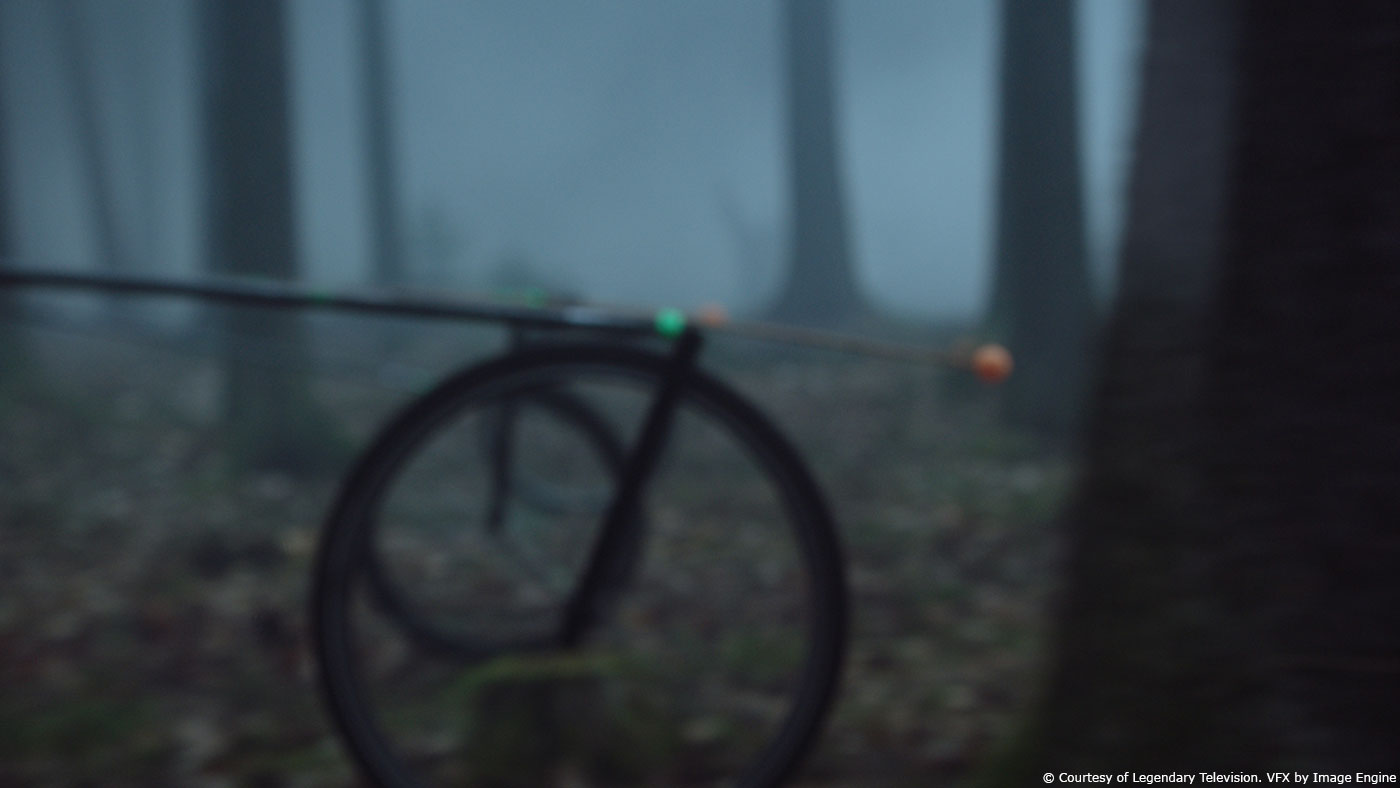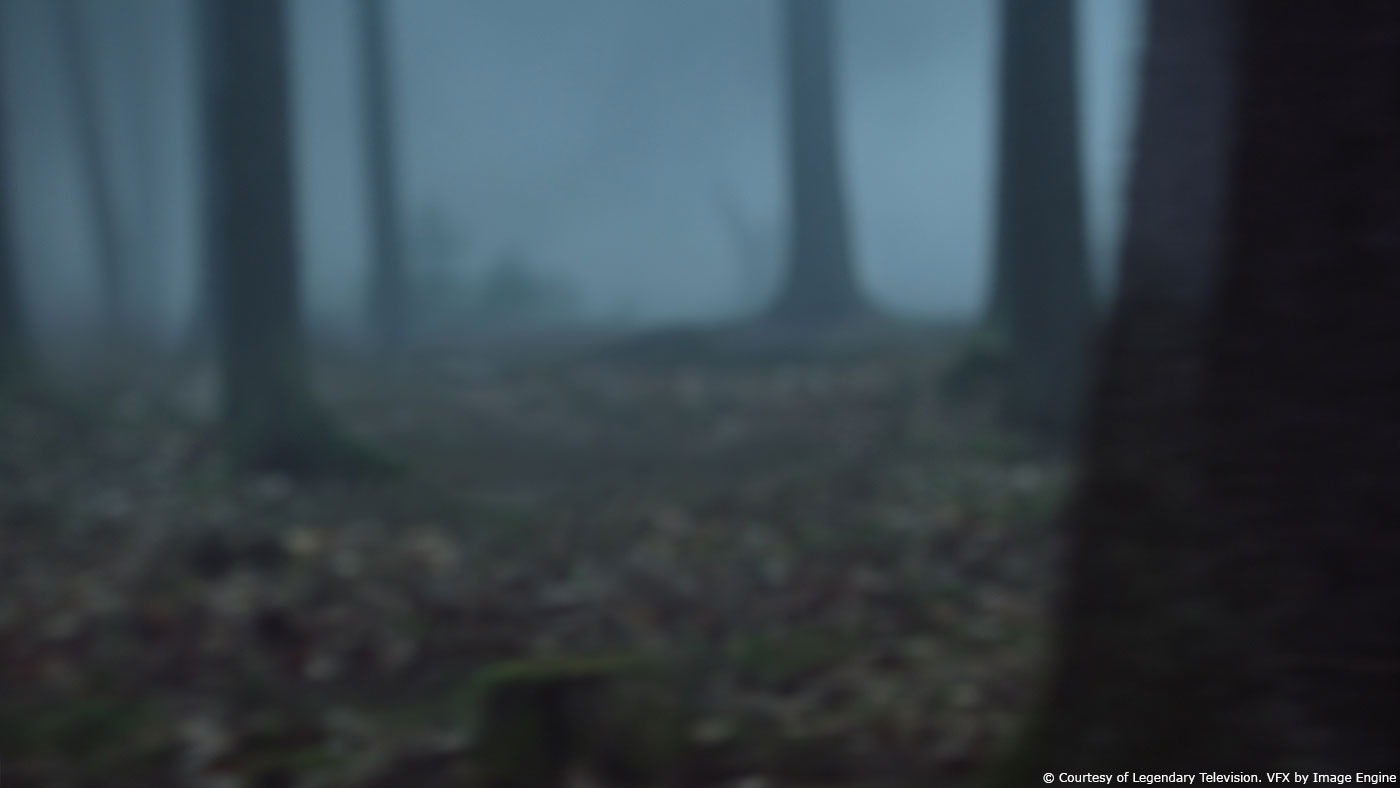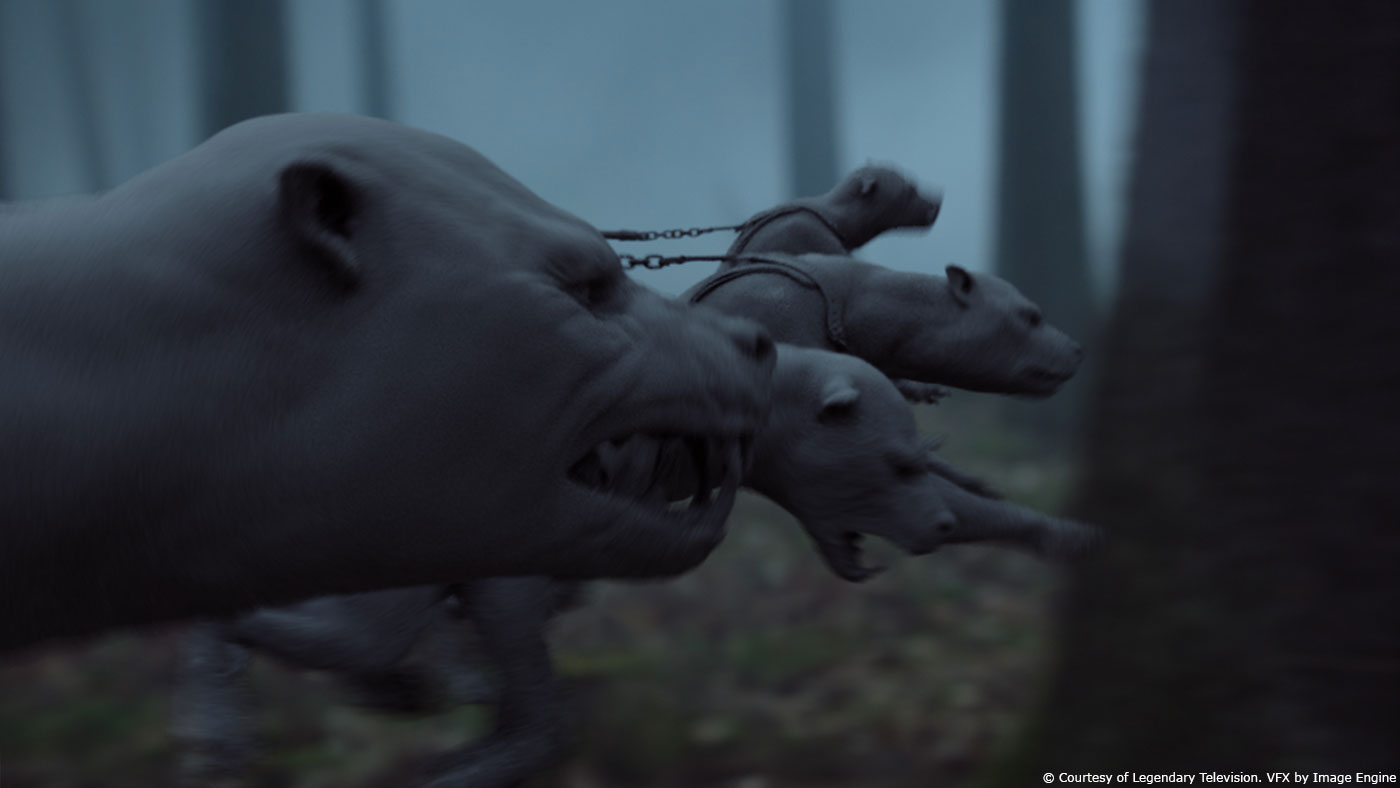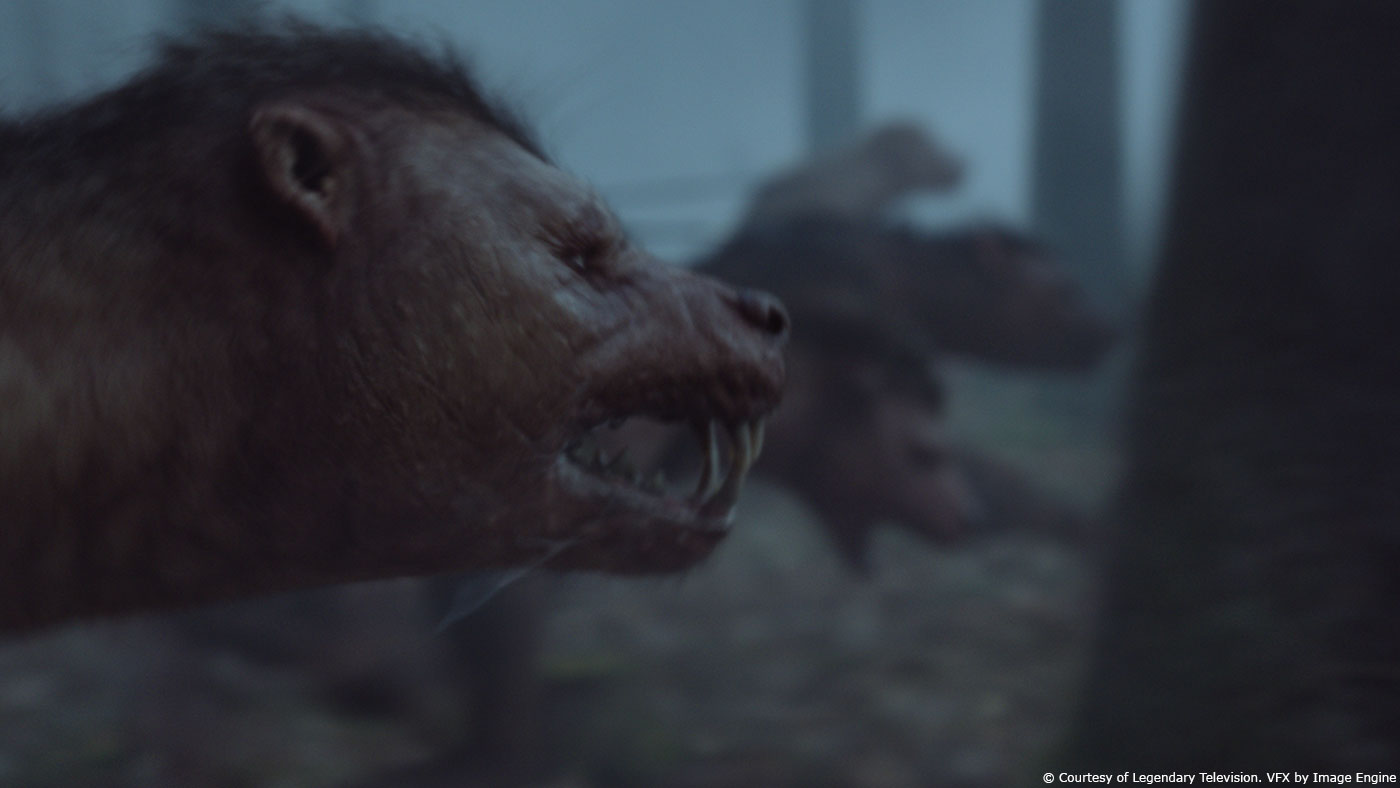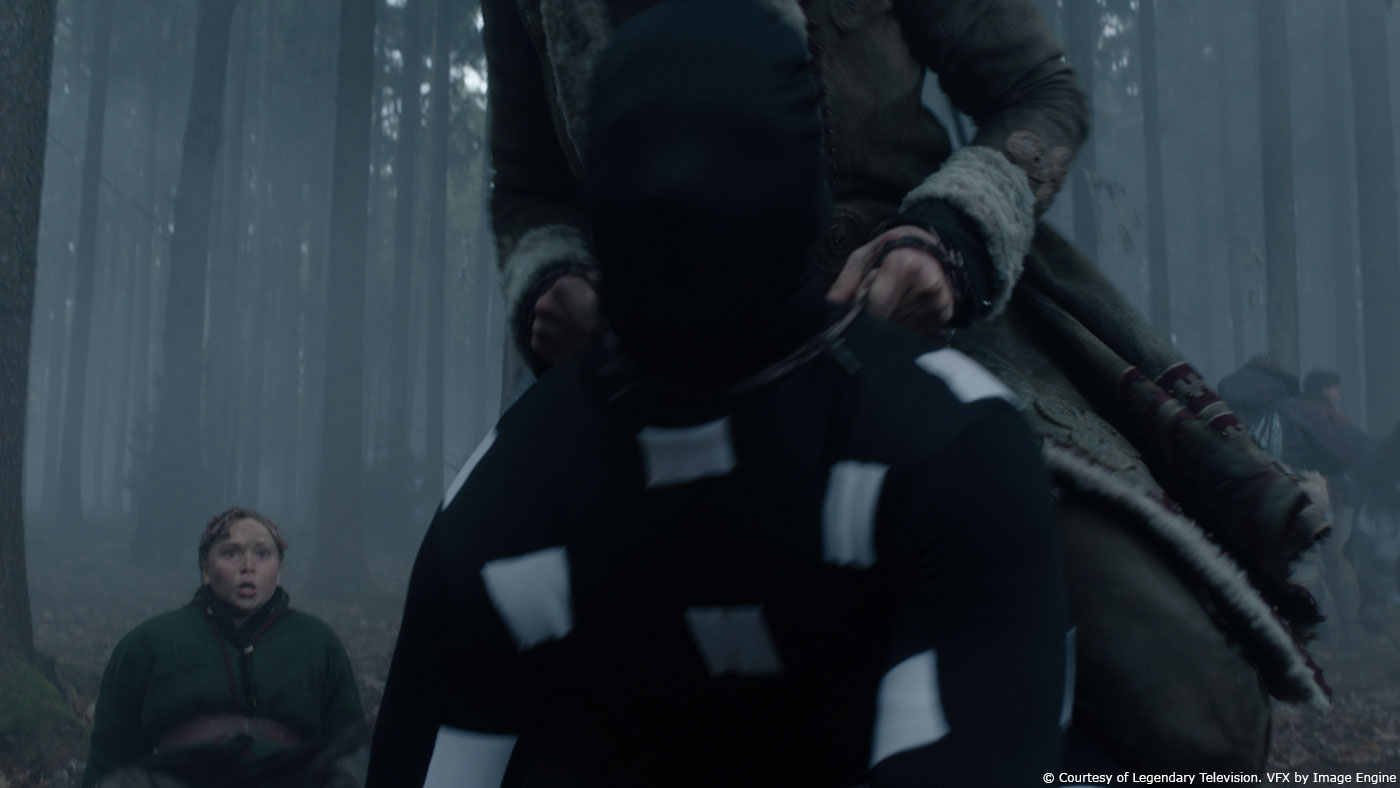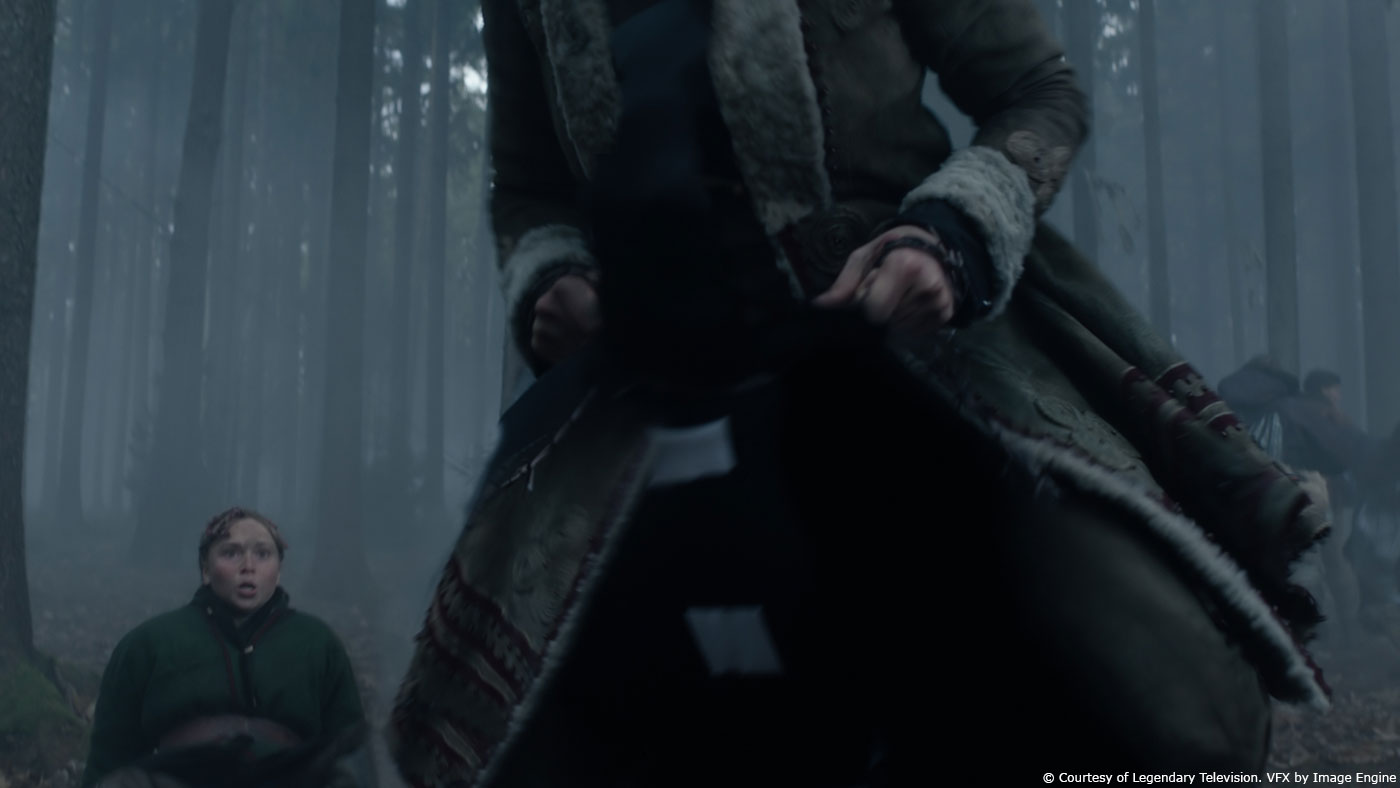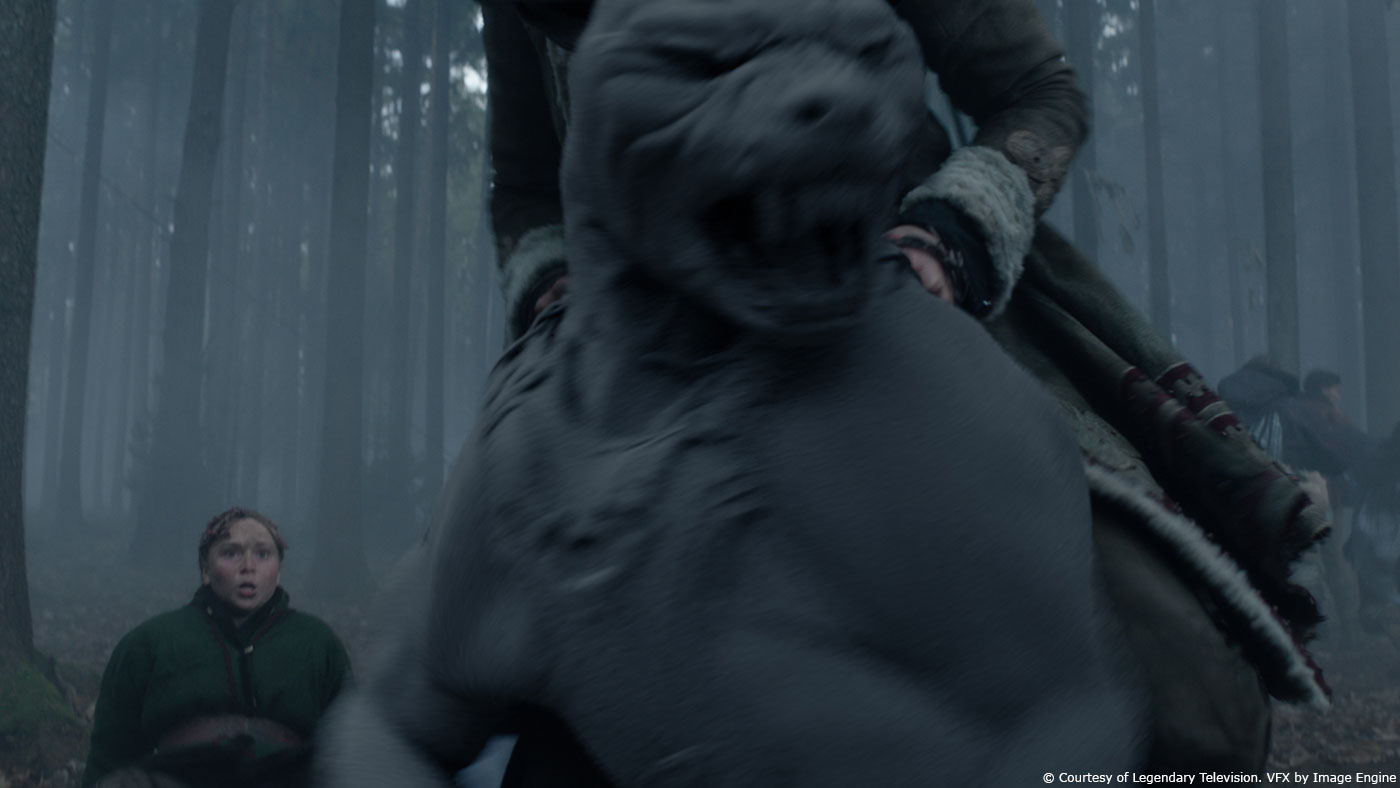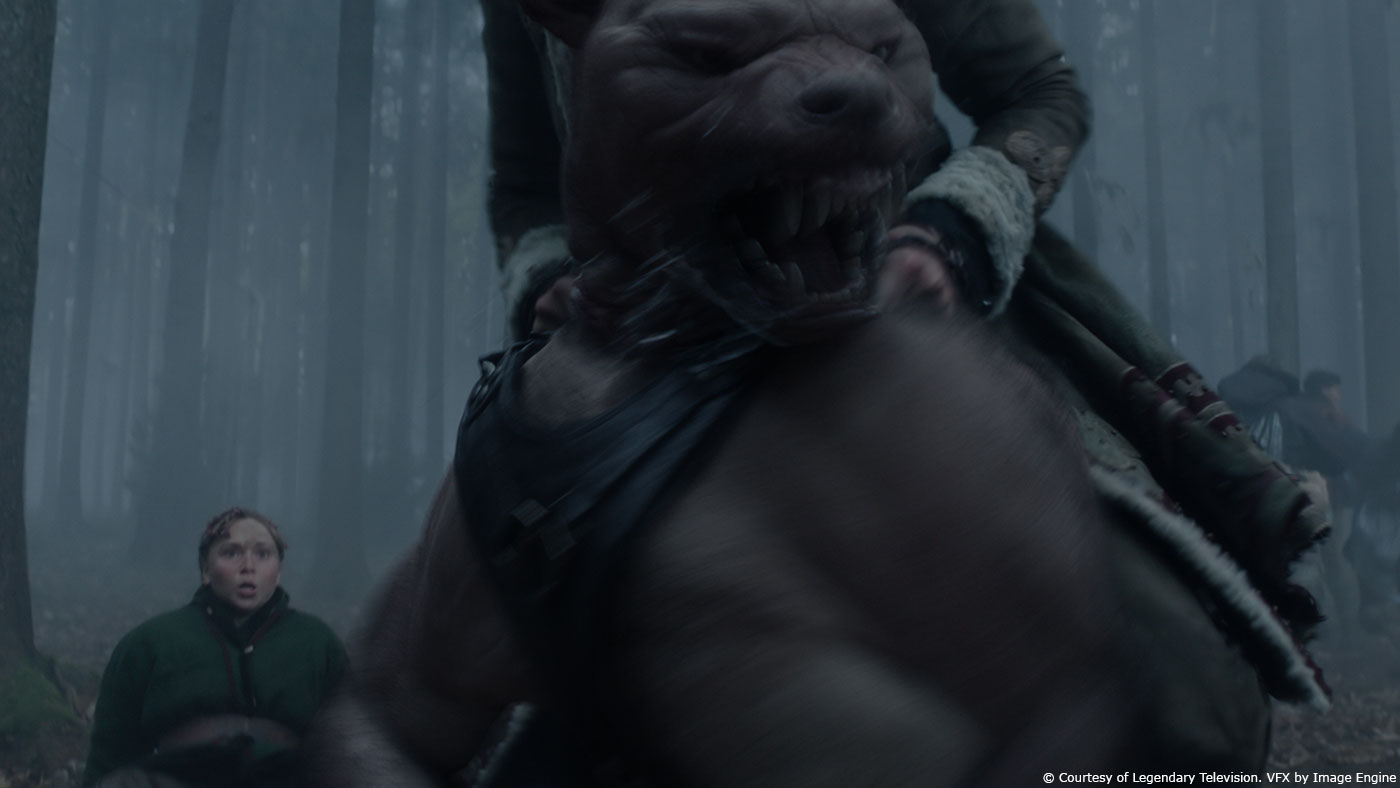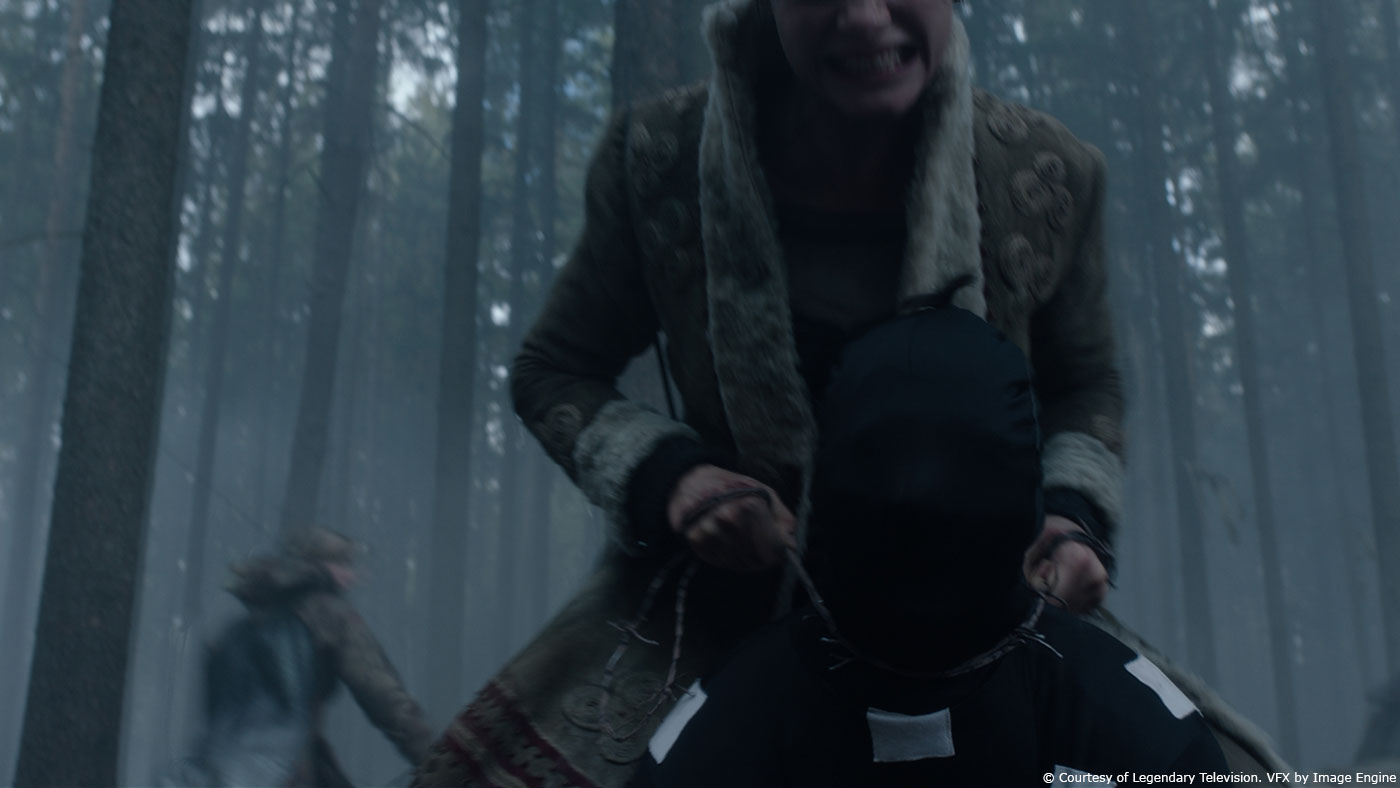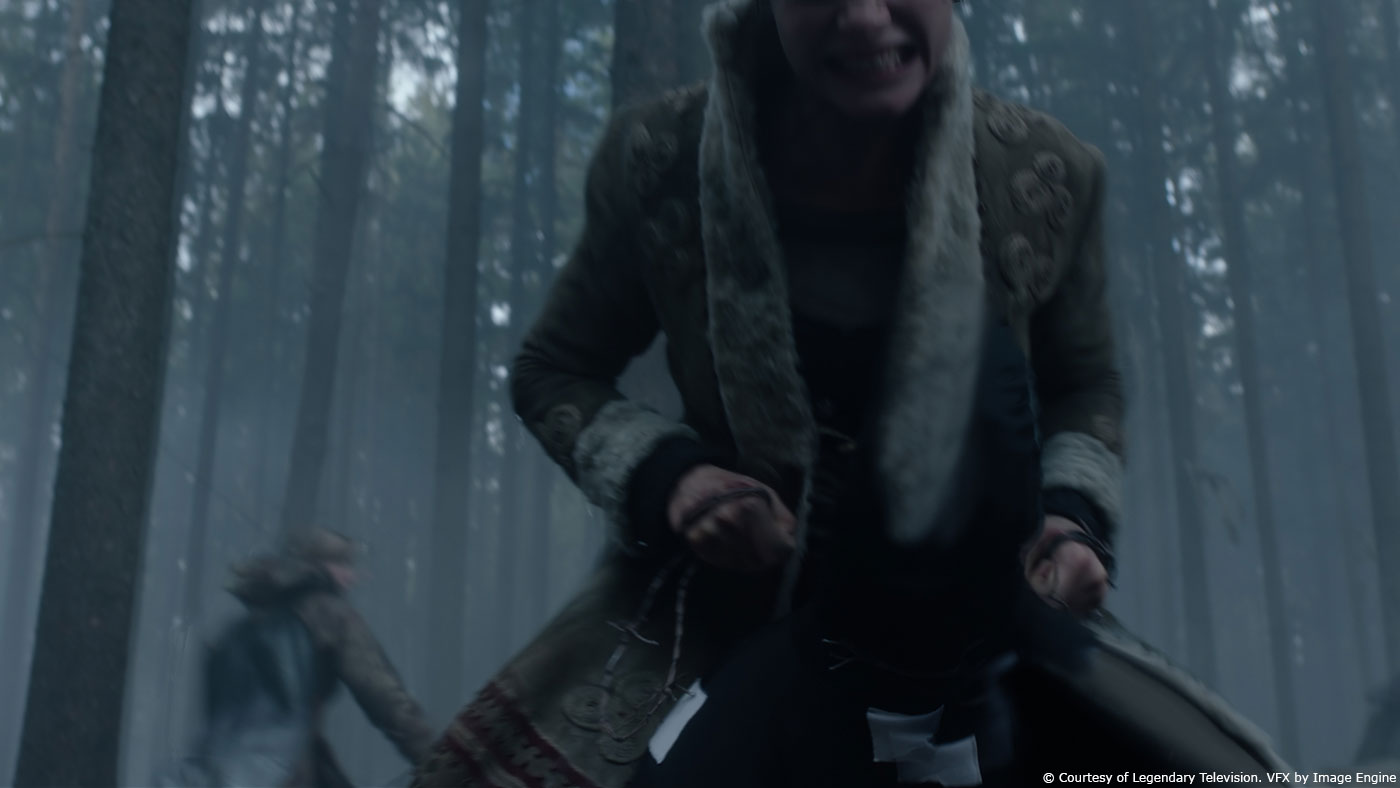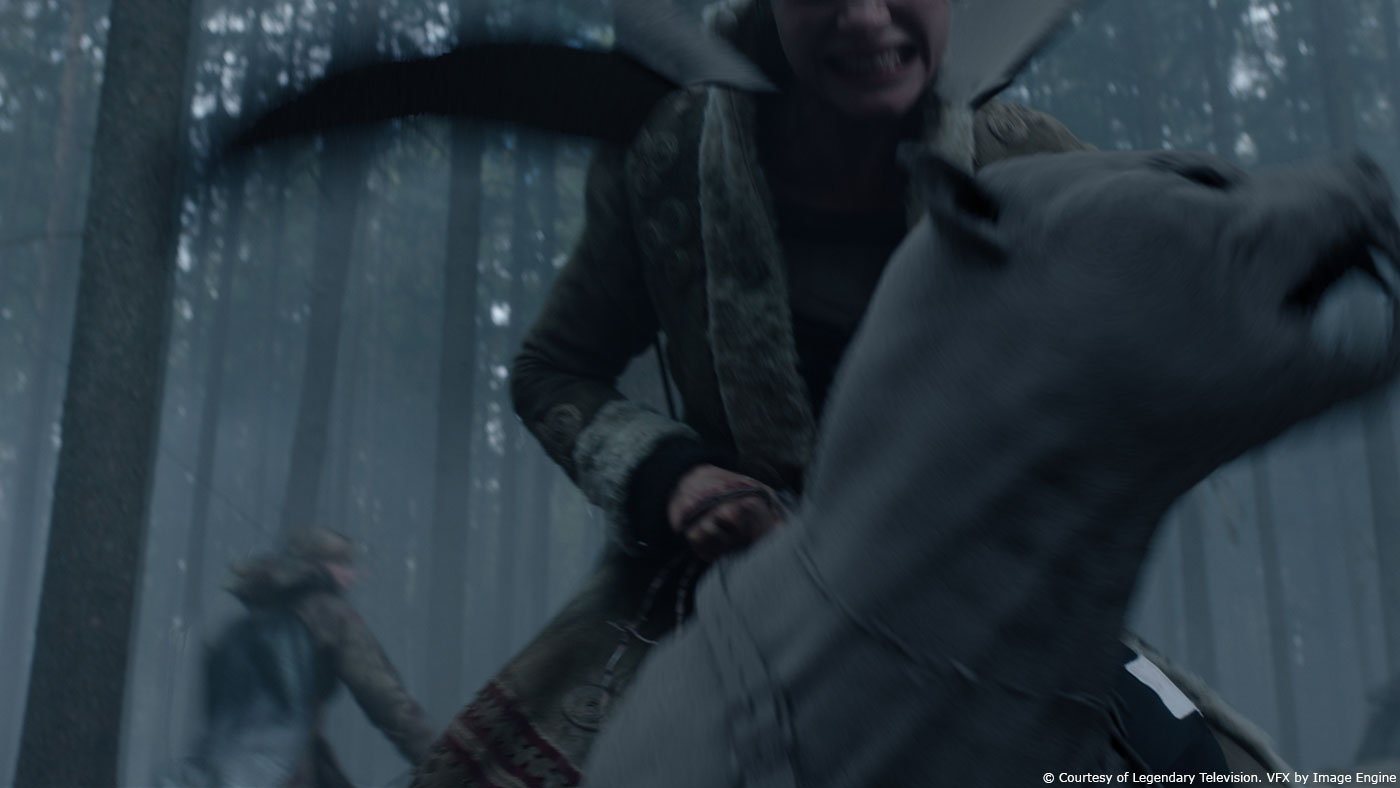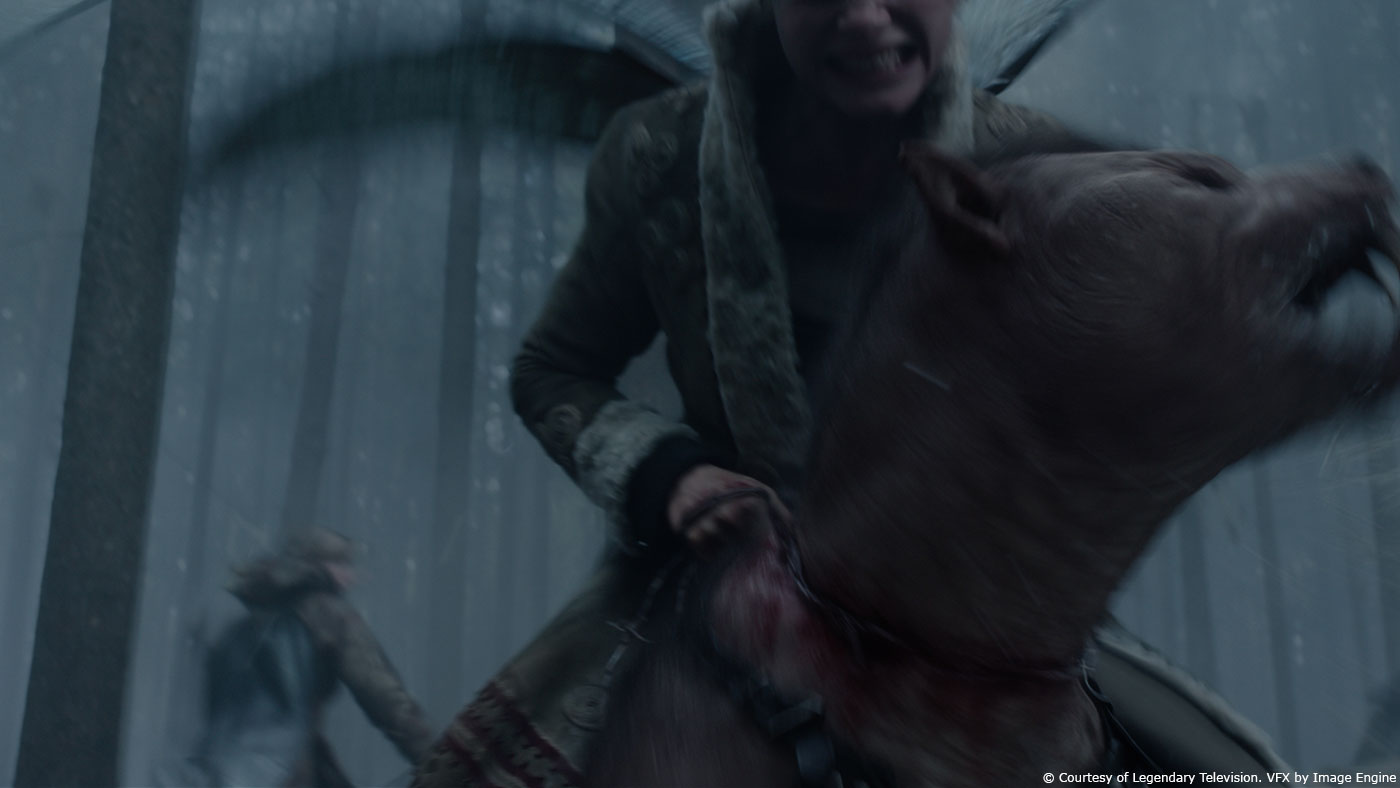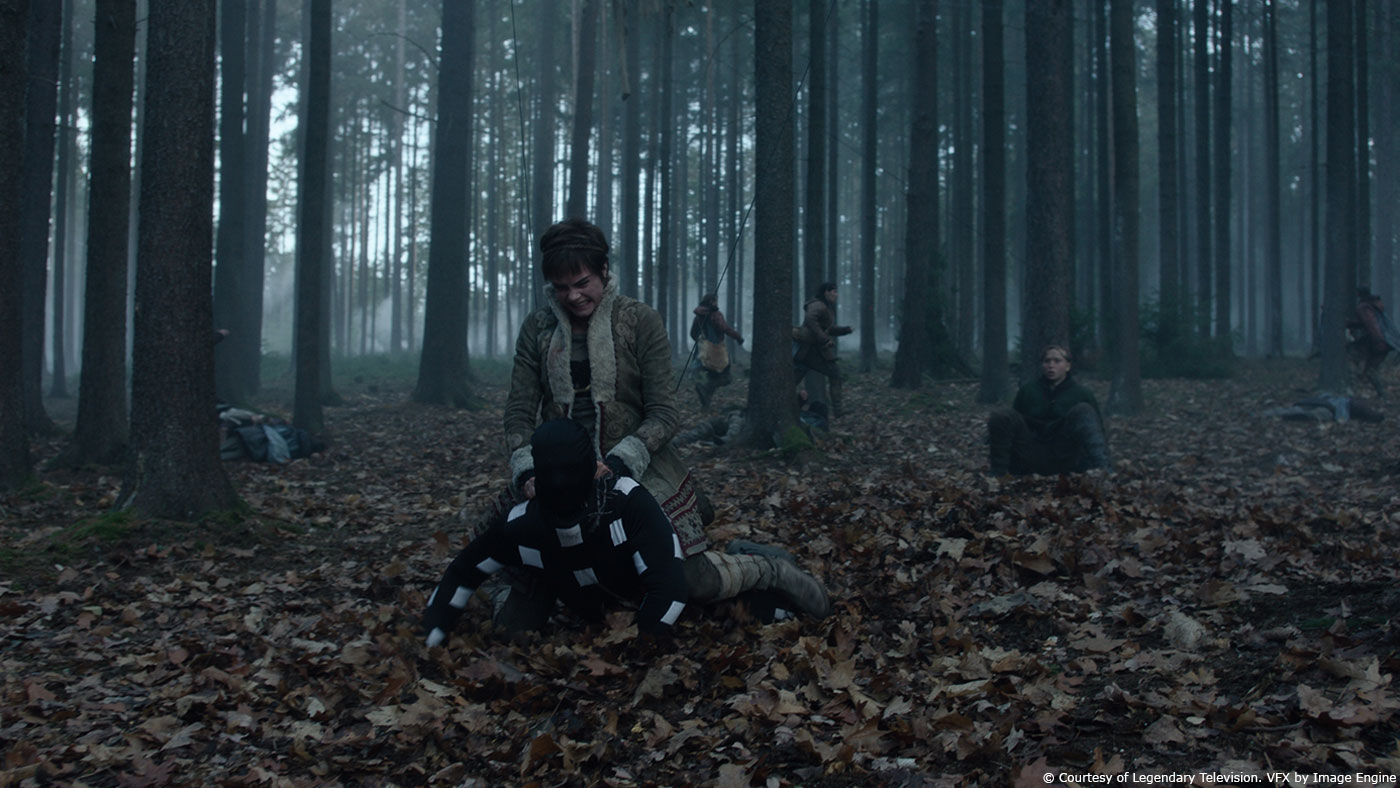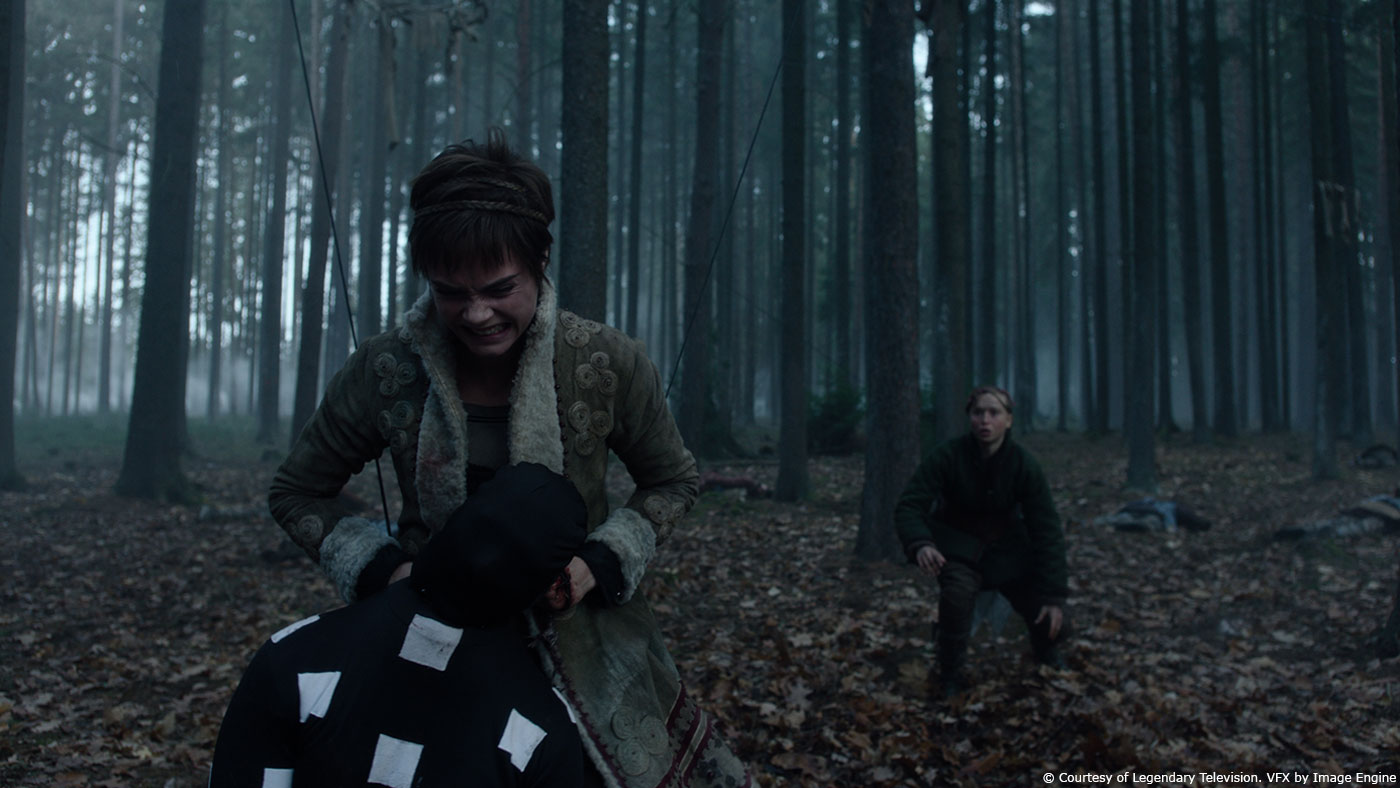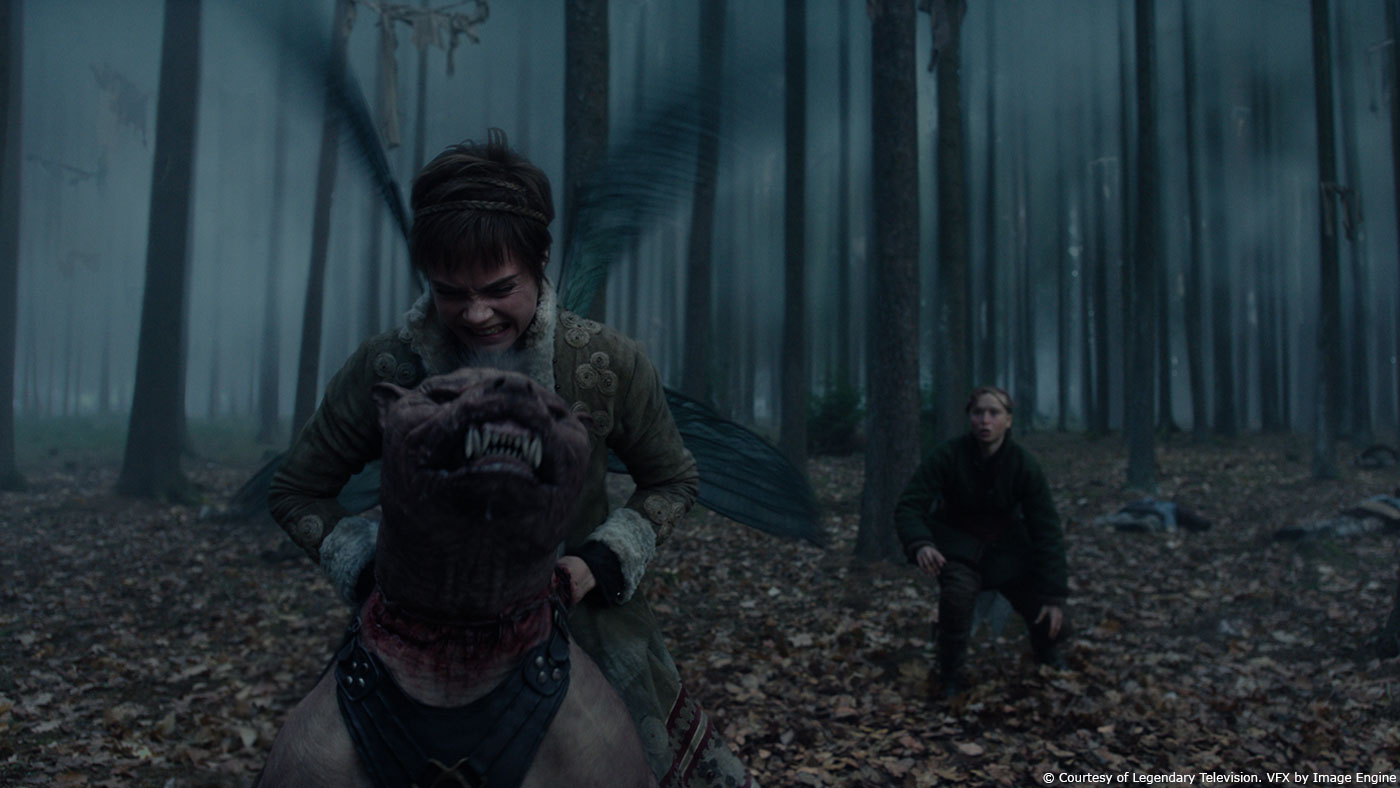Robin Hackl is one of the co-founders of Image Engine. He has worked on many projects such as THE TWILIGHT SAGA: DAWN BREAKING PART 1, DEADPOOL, LOGAN and THOR: RAGNAROK.
What is your background?
Robin Hackl – Visual Effects Supervisor // Simply put, my background is Image Engine. I co-founded the company back in 1995 and given it was just 2 artists I started as a generalist doing everything modeling, texturing, animating compositing and making sure the coffee was made. As the company grew, I found my interests beginning to gravitate towards compositing as I found so much freedom in being able to help find the final look of a shot. This was usually a mixture of CG and elements we would shoot in the garage of our building.
How did you and Image Engine get involved on this show?
RH // We were brought in very early on, prior to filming, and we began bidding off of scripts, storyboards and concept drawings. The show looked exciting even then, based on those early discussions, and we were thrilled when they decided to award us the work.
How was the collaboration with the show runners and VFX Supervisor Betsy Paterson?
RH // I knew Betsy was going to be great to work with right from the start. I hadn’t worked with her directly but our Executive Producer Shawn Walsh knew Betsy from back in his Rhythm & Hues days. I realized after speaking with her that we had actually worked indirectly together long ago in some shared work Image Engine had done with Rhythm & Hues on THE INCREDIBLE HULK with Edward Norton. I feel we had an immediate connection from that point on, and she really made it an enjoyable project to be involved with. Betsy was in sync with the showrunners; when she felt the shots were in a good position to show them, there were rarely any kickbacks. This allowed us to trust in her feedback and take a very linear path to finaling shots.
What was their expectations and approach about the visual effects?
RH // The basic approach was to try and keep this somewhat fantastical world grounded in reality as much as possible, given we were dealing with Werewolves and Darkasher. The effects were never meant to be the star of the show but rather help to tell the story. The expectation was realism, and production pushed us to get the best possible results. Animation was a vital part of this project, and through our collaboration, we were able to deliver exceptional performances.
How did you organize the work with your VFX Producer?
RH // Lilian Bravo, our VFX Producer, was the brains of the operation. She organized the work based on episode, which made it a lot easier to schedule. There were delivery dates per episode, so we knew we had to structure our time based on when each one delivered. Not dissimilar to film work, we spent a significant amount of time on the assets and made sure these would hold up no matter what direction the project would take as filming had just gotten underway and much was still relatively unknown. Our approach at Image Engine is usually (time permitting) to overbuild the asset as a way of protecting ourselves and our clients from scenarios where a close up is required late in the schedule. We ensured we could get working assets into rigging so that we could continue to develop the asset while allowing the animators to start testing rigs and flushing out issues with the model. This strategy allowed for much to be accomplished in animation without requiring a lot of tech anim to be done on the back end when time is short.
What are the sequences made by Image Engine?
RH // We were responsible for all the werewolf sequences and anything relating to the creature Darkasher. This work spanned across multiple episodes with episode 8 being the highest shot count and fortunately delivering last in the schedule. This was the most challenging of them all with more shots and a lot of physical interaction with the set, environment, and characters.
How did your work with the art department for Darkasher?
RH // This ended up being quite a collaborative effort. In the initial stages, there were several concept artists tasked with « finding the look. » We offered our own concepts from our internal art department as well. Production went through a fairly rigorous process of finding a design.
The premise that it was a creature made up entirely of miscellaneous mythical creature parts left room for literally any interpretation. The final design was done by production and supplied as a rough zBrushed model as well as a fully painted over concept. Once received, we presented back to production a « style guide » to help identify more accurate textural qualities based on real creatures.
Before we went into modeling, our concept artist at Image Engine Rob Jensen did an elaborate paint over on the model, building in accurate texture and surface characteristics of the various parts that made up Darkasher. Lizard reference for the lizard arm, diseased horse legs for the centaur leg and all the gruesome details of the decayed flesh were used. This was presented first to the client so that we were always on the same page about where we were going to take the creature. This was a massive asset build and with no time to go back to the drawing board, so we all knew we had to get it right the first time.
Once all the material characteristics were agreed upon we then put the task to the modeling department where we would spend the next six weeks developing a model that not only honoured the concept design but would allow for extreme close-up scrutiny. Look development was where we finally were able to add all the gruesome nuances required to realize the beast in shots. From rotting flesh to octopus tentacles the amount of details in the texture and shader work really paid off in the final work.
What kind of references did you received for this big creature?
RH // It was actually the other way around. We provided real-world references of animals to narrow down the specific looks of the variety of skin textures needed to read that Darkasher was a creation of multiple creatures, once we received the final concept art, back to production. We required this reference as much as production to really wrap our heads around what we needed to execute on.
How did you handle his rigging and animation?
Jenn Taylor – Animation Supervisor // Much of his main body was rigged similarly to our other biped creatures, but we did have to make some modifications to accommodate his one quadruped style hoofed leg, and the addition of his tail. Rigging used a combination of other creatures we had worked on in the past to create this hybrid creature. The major deviation was in the face, setting up all of the tentacles. For the most part, we used a series of FK chains for them, along with some attributes that allowed the animators to control the speed and size of the suckers. For the animation of Darkasher, we had some exploratory phases, trying to find the style of the creature. He is magically built out of different mythical creatures, and psychically controlled by a human, so we had to balance a level of when he is going to be aggressive, and when he would be disengaged. He also has differently weighted limbs, which was interesting to explore in his animation style.
Can you tell us more about the tentacles animation?
JT // The majority of the tentacle animation was hand keyed, using a series of FK chains. We created a few cycles that we could use as a base on some of his subdued performances, but once he got riled up, the animators would increase the frenetic nature of his tentacles on a shot by shot basis. We also utilized animation layers to add in the drag and overlap to his particular actions in the shot. In a few cases, we also added a layer of simulation to increase the ‘dead weight’ particularly on the shots where he was disengaged, and his tentacles were to be limp.
How was his presence simulated on-set?
RH // On set they had a full character standing for Darkasher in particular when there was environment or direct character interaction. For example, if the creature was turning over a table or grabbing our hero (Philo), throwing him or raising him over his head. As with most projects these days, we had to rely heavily on the often unsung heroes of the industry, the BG prep team. A massive amount of paint out was required as well as rebuilding part of the actor when they were covered by the SPX / stunt creature in the plates.
Darkasher is mostly seen in the dark. How does that affect you work?
RH // Piety’s lair in episode 8 was dark and had a very blue grade. We decided early on that the best way to approach this was first to neutralize all the plates with an exposure bump, so the lighting team had some range and real color information to work with. We worked this way all the way through the pipeline into compositing and inverted the neutral grade at the end of the process. Once we felt we had dialed in the lighting and comp, viewing it in its neutral space, we reviewed the material with the final client grade. It immediately just worked. We were able to maintain a level of interest and subtlety in the dark regions of the CG that would have otherwise been impossible.
Can you talk about the design and creation of the Werewolves?
RH // The design was based on approved concept art we received from the client. The artwork was a great starting point, but in this case, was a single view of a zBrushed model with a paint over to show the creature lit in a dark environment. We went through a lot of rigorous testing of the model through rigging and animation to ensure that the design would accommodate the actions required. We found that subtle proportion changes and tweaking to the anatomy were needed to allow for a full range of motion. We would present the model to production through all the various changes to ensure we were never compromising the intended design.
How did you handle the transformation challenges?
JT // These were a challenge, both technically and creatively. We had to try to find a new style for transforming instead of just replicating something else we had seen. We had to not only transform the mesh of the characters from the biped to the quadruped, but also the rig (biped and quadruped legs are set up significantly differently) as well as the length of all the bones. We then had to add many broken down blendshapes of each region of the body which would adjust the volume and shape between a human and our wolf. It was a complicated process to set up and troubleshoot, trying to find the best way to animate between the two with all of the above differences between the characters.
Can you explain in detail about the creation and animations for their transformations?
JT // Firstly, we looked at a LOT of references, all the way back to stop motion style werewolf transformations from the ’80s. We made a big reference reel of what we liked/didn’t like and what we could do to make it more unique to our creatures. We then started our exploration process of how we were going to animate between the two. We ended up animating between two fully set shapes/poses. One being a full human, with no wolf blendshapes driven, and the bones at the correct length for the human, and at the end of the shot, we had all the blendshapes set to 1 (full werewolf), as well as the bones length and positions for a default quadruped setup. This gave us a target to head towards. As we set our keyframes for the performance, we could see each bone’s length between human and wolf, as well as the amount of shape driven between human and wolf on that area of the body. This was a big help in making sure we weren’t going off-course with scaling a bone too far towards wolf, while having too human-like shapes triggered, for example. Once we were happy with the overall motion, we continued refining the speed of the bone and shape growth throughout the shot. Finally, we passed over the final product to shot sculpting to give us additional, great details such as protruding ribs and other fine details.
How did you create their eyes and fur?
RH // Having done many creatures at Image Engine, we had a good head start to what works regarding how to both model and texture eyes to get good results from lighting. We tried to maintain as much of a human quality to the final look as each wolf character needs to maintain a sense of their human counterpart. So coloration and characteristics were much more human than dog, for example. This was in itself a challenge in that it looks too strange to have a full human eye look in the wolf, so there was some time needed to find the right blend to not call too much attention to itself. Additionally, a lot of work always goes into not only the eye but the wet connection or mucin layer from eyeball to eyelid to allow for a believable transition. Another added touch was getting subtle eyelid deformations when the eyes moved. Fur was done in Houdini. The Werewolves’ design was more skin than hair with enough hair to convey their human counterparts’ qualities. We did simulations only on hero shots as the quality of the hair was more like a hyena’s mane, which has a bit more stiffness to it. When we added our final pass of skin sliding in tech anim / creature FX this tended to give the hair enough movement to sell it.
What is your favorite shot or sequence?
JT // I’m really happy with the Darkasher tentacle roar in the final battle with Philo.
RH // My favorite shot was also the shot that was of the most concern when we received plate turn over. It was to be the first big reveal close up of Darkasher in episode 6. 100% in your face with nothing to hide the CG behind. It was the hardest to get to work which are usually the most rewarding when they do.
What is your best memory on this show?
RH // I always enjoyed trying to act out Darkasher actions with Jenn. we really should have filmed this for prosperity. I am pretty certain she would often walk out of my office shaking her head and thinking… ‘I am definitely NOT doing that.’
How long have you worked on this show?
RH // From the time we created the first folder on our file system on award to completion was almost exactly 2 years. Perhaps the longest run I have had on any production I’ve been involved with.
What’s the VFX shots count?
RH // 169.
What was the size of your team?
RH // 120.
What is your next project?
RH // THE MANDALORIAN 🙂
What are the four movies that gave you the passion for cinema?
RH // I am probably dating myself, but I still remember sneaking into the drive-in theater to watch STAR WARS over and over again. BLADE RUNNER, 2001 and ALIEN are in the top ten for sure.
A big thanks for your time.
WANT TO KNOW MORE?
Image Engine: Official website of Image Engine.
© Vincent Frei – The Art of VFX – 2019

